Aussie Greig Fraser is the Dune and The Batman cinematographer
For two of the biggest blockbusters of the year – Dune and The Batman – Hollywood turned to cinematographer Greig Fraser. Why?
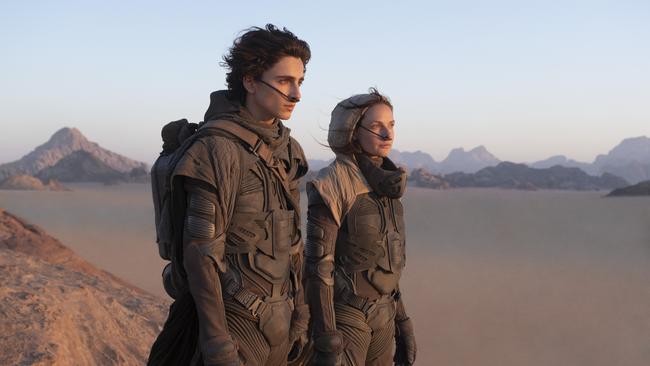
Blockbusters are back, and two of the biggest – Dune and the upcoming The Batman – are the work of one Australian cinematographer: Greig Fraser.
Directed by Denis Villeneuve (Sicario, Arrival), Dune reportedly cost $165m to make and has so far grossed more than double that worldwide.
Fraser is currently prepping the sequel. Not bad for a 46-year-old who started his career working as a cleaner back home in Melbourne in the 1990s.
At the time he was also studying photography. But it was in that small studio where he emptied the bins also dabbled in film that he caught the bug.
He met a young director named Garth Davis, a former graphic designer, and the pair started collaborating on a documentary about – of all things – parking inspectors in Fitzroy. “It was a crash course on narrative,” recalls Fraser, voluble and friendly on a video call. “On how to shoot for narrative. We shot probably thousands of hours of these guys.”
Over the next decade, the cinematographer made a series of acclaimed shorts, including one with Jane Campion. And it was Campion’s 2009 feature, Bright Star, about the relationship between John Keats and Fanny Brawne, that provided Fraser with an entree to Hollywood.
Fraser turned down all the period dramas that came his way thereafter – he doesn’t like to do the same thing twice – and in the years since he’s been behind the camera on films as varied as Zero Dark Thirty and Vice.
He spearheaded the use of cutting-edge new technology on The Mandalorian, a series set within the Star Wars universe, and he reunited with Davis on the Oscar-nominated Lion.
His rapid ascent to the big leagues can be attributed to his taste, as well as a desire on the part of directors to imbue outsize worlds with a certain grit.
Fraser frequently operates the camera himself, and his independent origins have given him a reputation for verite naturalism.
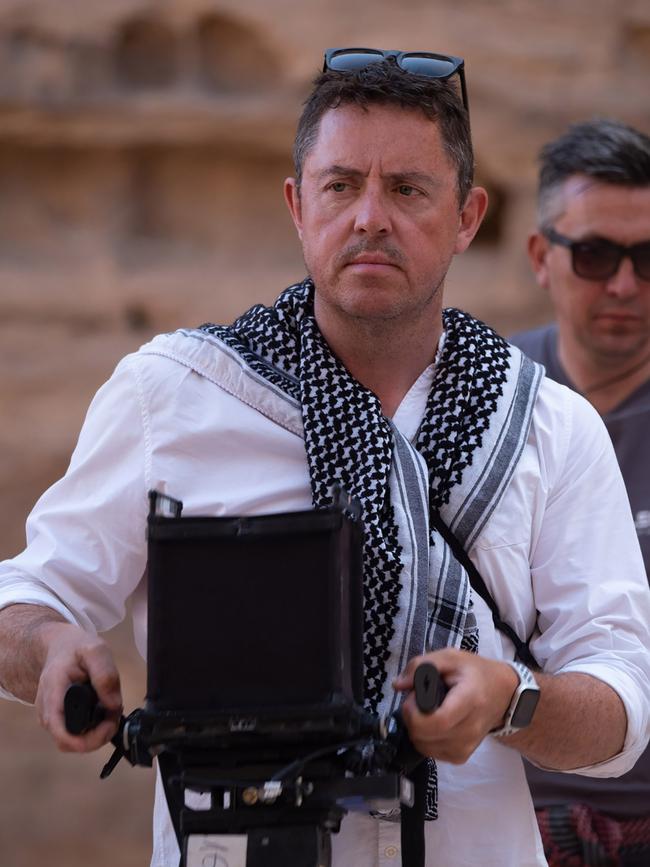
The cinematographer himself points out that it’s easy to label people, and that a film like Bright Star had barely any handheld shots at all. But he also admits that Villeneuve, with whom he shares a background in documentary, was attracted by his use of natural light – even if that approach wasn’t always possible on a film with as many bunker-like interiors as Dune.
“He wanted this grounded sci-fi that didn’t feel lit in any way. And it’s a big challenge to make these studio set builds that we did in Hungary feel as natural as possible. It’s easy to make the desert feel natural, obviously, because you just turn up and it’s natural. But doing that in a studio environment is a lot harder.”
Based on Frank Herbert’s seminal 1965 cult sci-fi novel, Dune has a familiar story. It’s a tale of warring houses, interplanetary strife and a princeling who labours under the burden of expectations.
But the film, which stars Timothee Chalamet alongside Jason Momoa, Josh Brolin and a host of others, is so immersive it doesn’t matter. It also puts to bed forever the notion that the book is in fact unfilmable, a suggestion used to excuse a widely derided film adaptation of Herbert’s novel by David Lynch in 1984, which starred Kyle MacLachlan.
Fraser shot on large-format digital cameras – the film was made to be seen on IMAX, he says – after testing and rejecting the refrigerator-sized film cameras favoured by the likes of Christopher Nolan.
“Those cameras are a bit noisy, they’re a bit heavy,” he says. “Whereas I wanted the cameras to be invisible, as did Denis.”
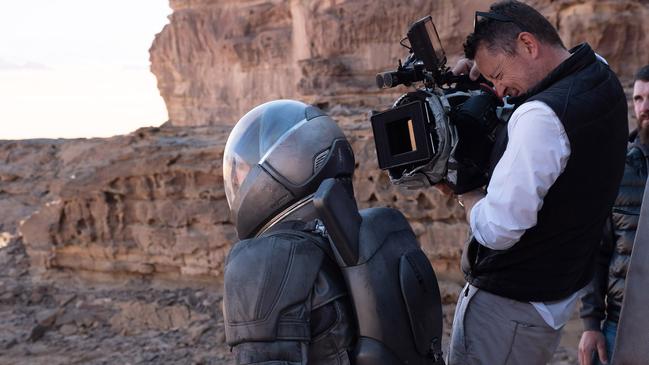
Both men were determined to maintain a sense of intimacy with the actors despite the vast scale of their surroundings, shooting on location in Jordan, the United Arab Emirates and Norway.
That intimacy characterises his blockbuster work, argues the cinematographer.
“I’ve been fortunate in moving from small little intimate dramas to bigger films. But those bigger films – I feel like they’ve got a common thread, and that’s a very small story. Dune … okay, you would never call that a small story. But it’s a story about family, you know? About a father and a mother and a son. Just (so) happens that the son is potentially the messiah …”
Villeneuve has a reputation as a virtuoso technical director, with a precision-tooled visual style that is recognisable from film to film. But even though the filmmaker has been a Dune reader since he was a teenager in Quebec, and “had very strong opinions about what this film should be, because he’s been living with it for 40 years”, he wasn’t prescriptive about lenses and other technical matters, and Fraser describes the result as a “joint baby”.
Given the sheer scale of the enterprise, how did the collaborators know where to start?
“The same way you eat an elephant,” the Australian tells me. “The only way: one bite at a time.”
He took his cue, at least in part, from the monolith-like sets designed and built by Villeneuve’s regular production designer, Patrice Vermette. Dune’s world is intricate and impressively realised, with helicopters that look like dragonflies and bedrooms straight out of Frank Lloyd Wright’s block houses, only with sally ports for windows.
Vermette is currently in Melbourne, working on a film directed by Garth Davis, which Fraser wishes he could shoot but can’t because of a mix factors – among them distance, the pandemic and commitments to The Batman, which will be released in March.
The other day he was at a film lab in Los Angeles, colour-grading that superhero film alongside its director, Matt Reeves, when he ran into Campion and her director of photography, Ari Wegner, in town to promote their Oscar hopeful, The Power of the Dog.
It was a serendipitous encounter. It was Campion’s Bright Star, after all, that had initially brought him to the attention of Reeves, with whom he made his first American film over 10 years ago, and Wegner was his trainee on one of Fraser’s last Australian features to date: 2009’s Last Ride, starring Hugo Weaving.
“It’s a small world,” he says. “I mean, Australia’s a pretty incestuous little talent pool, isn’t it?”
He still keeps an eye on the industry back home, speaking to Davis and other old friends such as Nash Edgerton (Mr Inbetween) several times a week. Fraser made a couple of shorts with Edgerton in the early days, after sending him his reel. The director describes the young cinematographer as a brilliant communicator, a conduit between the creative team and the crew with the instincts of a storyteller, and remembers how sought-after he was, even back then. “I scheduled the shorts the weekend before Christmas, because I knew I would be able to get him,” Edgerton says. “I scheduled around him because I wanted to collaborate with Greig.”
A few years later the pair made a music video together – for Bob Dylan, no less – in Los Angeles. Edgerton lassoed the cinematographer while Fraser was on a reconnaissance trip to the city with his wife, costume designer turned textile entrepreneur Jodie Fried.
The couple now live in the beachside suburb of Venice with their three children, in a house designed by an Australian company to be a sanctuary in the middle of La-La Land that naturally prioritises natural light.
Could it be that innate understanding of natural light that has made Australians sought-after cinematographers internationally for decades? John Seale, Christopher Doyle and Russell Boyd paved the way, with Adam Arkapaw part of the new-generation directors of photography in demand overseas. But though he’s firmly ensconced in Hollywood, Fraser is conscious he doesn’t want to become known as the blockbuster guy, even if some opportunities are too good to pass up. “Who’s not going to do Batman with Matt Reeves? What idiot wouldn’t do that? With Dune it was the same thing.”
He’s now a veteran of studio filmmaking on an industrial scale. But even standing among all the trucks and extras and machinery, he’s still just that Melbourne kid with the camera around his neck.
Villeneuve encouraged him to take photographs throughout the Dune production process, he says, and it was the first time he’s done so in decades. “
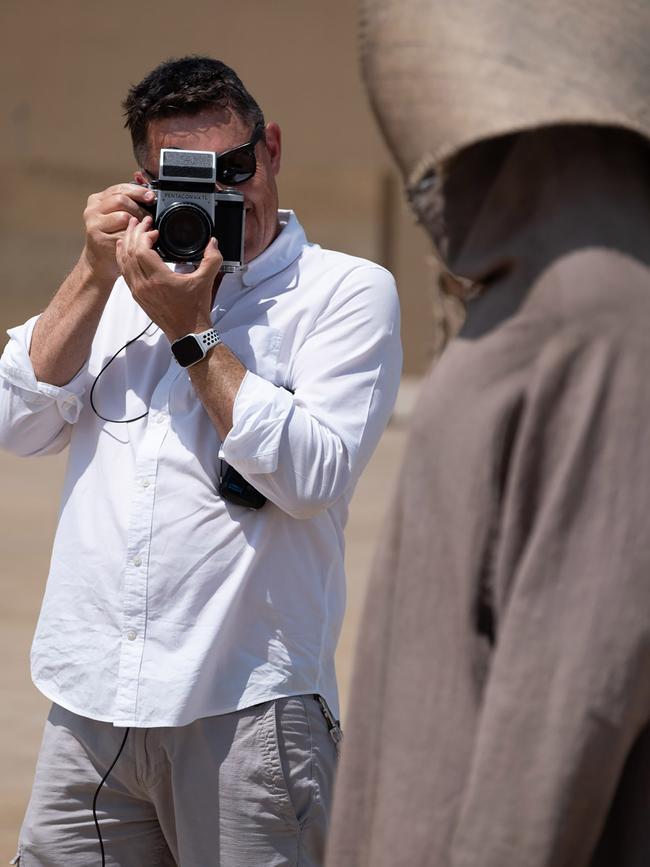
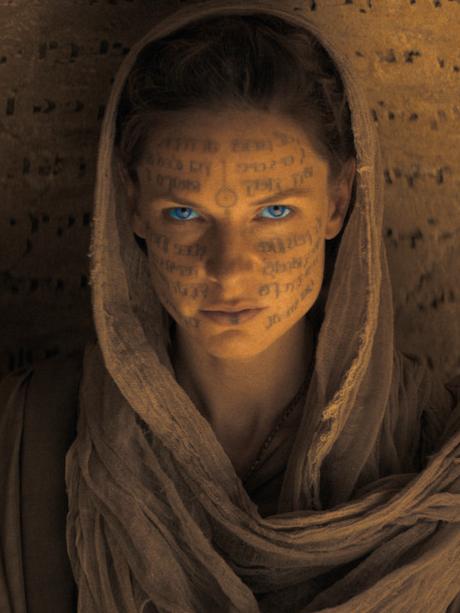
And I found it really liberating, because there were no expectations. I didn’t have to provide anything. He didn’t even ask to see images, even though he saw me shooting … which I was thankful about, because a lot of the images were terrible.
“But it was quite cathartic, actually. I could take a photo of something and come back to what I was setting up (on-set) and see it with a bit more clarity … I’ve definitely gotten better over the years about quickly making decisions. And trusting my instincts.”
Dune is in cinemas now.
